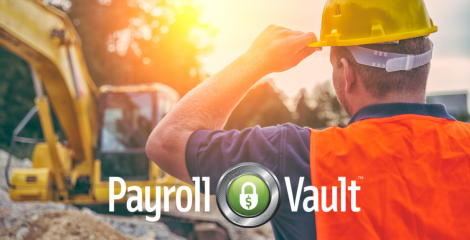


As business owners navigate the complexities of payroll management, understanding various components such as hazard pay becomes essential. Many employers ask, "What is hazard pay?" especially when they operate in industries where employees face hazardous conditions. In this blog, we’ll look at the basics of hazard pay, what jobs get hazard pay, and how they can affect your payroll.
Defining Hazard Pay
The U.S. Department of Labor defines hazard pay as additional compensation provided to employees for performing duties that are considered hazardous or involve significant physical hardship. Hazard pay is a financial incentive recognizing the increased risks and challenges that certain employees face in their line of work. It’s particularly relevant in sectors like construction, manufacturing, healthcare, and emergency services, where employees routinely encounter potentially dangerous situations.

But what is considered hazardous from a legal perspective? According to free legal information provider FindLaw , hazardous work encompasses tasks that are inherently dangerous, involve working in perilous locations, jobs that cause extreme distress, or tasks that result in severe physical discomfort even with the use of appropriate protective gear. Some examples of jobs that earn hazard pay include the following:
For business owners, integrating hazard pay into your payroll system requires a clear understanding of which roles qualify for this additional compensation. U nderstanding what hazard pay is and when it’s applied is crucial for fair compensation practices and for maintaining compliance with labor laws.

Adopting Hazard Pay
With the question “what is hazard pay” answered, some business owners may ask “how much is appropriate for hazard pay?” Hazard pay should be calculated based on the level of risk and the nature of the tasks performed. It ’ s often determined as a percentage of the employee ’ s base pay or as a fixed additional amount. For example, the U.S. Office of Human Resource Management provides up to 25% of the basic pay rate for federal employees as hazard pay.
When you’re applying hazard pay to an employee’s pay, it’s important to consider if that employee also qualifies for overtime pay. Should an employee work overtime hours while also doing work that qualifies them for hazard pay, then both overtime and hazard pay will apply. When calculating that employee’s pay, the overtime will need to be applied to their base hourly rate as well as the hazard pay combined.
Here are some additional tips for providing hazard pay to your staff:

Hazard Pay Complexities
One of the biggest challenges with providing hazard pay is knowing just when hazardous conditions apply. The COVID-19 pandemic is a prime exampl e . While Congress did create a fund for hazard pay in 2020 , not even the Coronavirus Aid, Relief, and Economic Security (CARES) Act made hazard pay a requirement for those working during the government shutdowns. While additional funds like the “Heroes Fund,” “Patriot Pay,” and Health, Economic Assistance, Liability Protection , and Schools (HEALS) Act were either created or pursued, nothing was done to make hazard pay mandatory for essential workers, even during the height of the shutdowns.
A lot of factors can determine whether an employee is entitled to hazard pay. The risk involved in their duties, the equipment they’re using, the conditions they’re working under, and more , all help determine just how dangerous their work is on a normal basis. The best way to make sure your hazard pay policy is comprehensive is to hire experts like those at Payroll Vault, who have the resources and know - how to help you create a policy tailored to your business.
More Than Just Money
When employers ask , “what is hazard pay”, it can mean more than just extra money. It plays a significant role in employee morale and job satisfaction. Employees who feel that their risks and efforts are acknowledged through fair compensation are more likely to stay motivated and committed to their work. For businesses, this can mean reduced turnover, enhanced reputation as an employer, and an easier time attracting top talent in industries where hazardous conditions are part of the job.
F or businesses involved in industries with hazardous conditions, understanding and appropriately implementing hazard pay is necessary . It’s not just about compliance with labor laws; it's also about recognizing and valuing the extra risks that your employees take on a daily basis . Effective management of hazard pay can lead to a more satisfied and dedicated workforce and can help establish your company as a responsible and appealing employer.
Fine-Tune Your Payroll with Payroll Vault
We’re ready, willing, and able to help small business owners like you manage the administrative side of your company. We’re a payroll company with the knowledge and experience you need to streamline and manage both your payroll and your human resources needs. We offer a boutique-style service that includes payroll, tax filing, and HR solutions. Whether you’re an independent business owner with a single location to manage or a franchisee with several locations to run, we’ve got you covered. We can handle multiple forms of payroll, from physical checks to direct deposit to pay cards. We also have an extensive policy library to answer questions like “what is hazard pay,” “which employees qualify for overtime,” and “ how do I set up company health insurance?”
Find your nearest Payroll Vault location today to learn more about what we can do for your business.